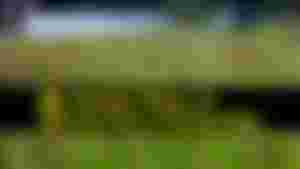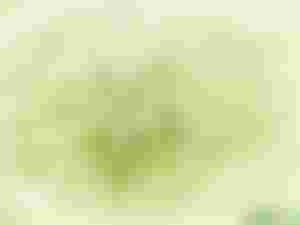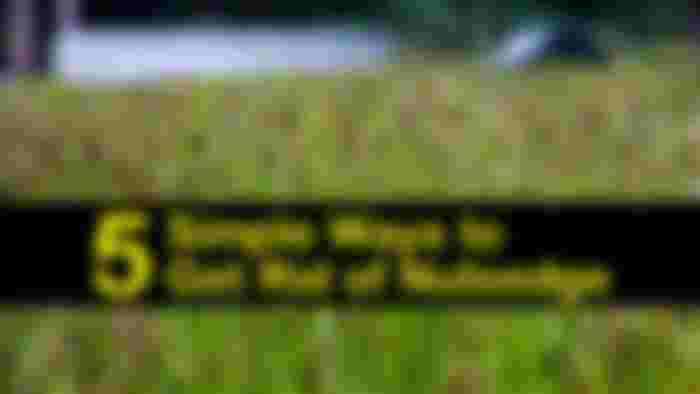Nutsedges are extremely aggressive and protracted weeds that usually infest lawns, vegetable and flower gardens, and home landscapes. They're able to be very hard to eradicate and their management is likely to become a lengthy approach. Thriving management entails both of those cultural and chemical administration strategies.
Once a nutsedge infestation has long been controlled, sanitation to circumvent new introductions is vital. Any new infestations need to be managed ideal away to forestall spread of such aggressive and difficult-to-control weeds.
Life Cycle & Description
Nutsedges are often called “nutgrass” because they closely resemble grasses. Correct identification is really important, as most herbicides for grass command are not effective on sedges. Nutsedges is usually distinguished from grasses by their stems, which are triangular or V-shaped in cross section, while grass stems are hollow and round. Their leaves are thicker and stiffer than most grasses and are arranged in groups of three at the base. Nutsedge leaves appear creased with prominent mid-veins.Most nutsedges are perennials whose leaves die back in the fall when temperatures decrease. Tubers (often called “nutlets”) and rhizomes (underground stems) survive in the soil and sprout the following spring. The tubers and rhizomes can grow eight to 14 inches below the soil surface.
Nutsedges thrive in almost any kind of soil. While they prefer moist soil, established nutsedge plants will thrive even in dry soil. They distribute by small tubers, by creeping rhizomes or by seed. New tubers begin forming four to six weeks after a new shoot emerges. Individual nutsedge plants may eventually form patches 10 feet or more in diameter.
Identifying Nutsedges
Purple nutsedge (Cyperus rotundus) and yellow nutsedge (Cyperus esculentus) are the most common nutsedges in South Carolina. Yellow nutsedge is more widespread than purple nutsedge due to its greater cold tolerance. However, where purple nutsedge is adapted, it can be even more vigorous than yellow nutsedge. The two species often grow together. Because purple and yellow nutsedges differ in herbicide susceptibility, correct identification is significant to productive command.
Control in the Lawn
A combination of cultural, mechanical and chemical management approaches has the best chance of effectively managing nutsedge.Cultural Control: Nutsedges thrive in moist areas and their presence often indicates that drainage is poor, irrigation is too frequent, or sprinklers are leaky. At the time established, however, they will tolerate normal moisture levels or even drought.
Nutsedge tubers are spread by cultivation and introduced in topsoil and nursery stock. They can persist in the soil for years. Learn to recognize nutsedge to avoid accidentally bringing it in on newly purchased sod, topsoil, or plants. Be sure to thoroughly clean tools and equipment such as tillers that have been used in an infested area to avoid spreading tubers and rhizome pieces.Give turfgrasses a competitive advantage by following all recommended practices for the lawn species including mowing at the ideal height, applying fertilizer at the proper rate and time, and maintaining the ideal soil pH. Proper irrigation amounts and timing are especially important, since excessively moist soil will encourage the growth of nutsedge. Monitor and manage insect and disease infestations to avoid thin, bare areas that may be overtaken by nutsedge.
Mechanical Handle: It is possible to eliminate pretty small patches of nutsedge by digging. Dig at least 10 inches deep and at least eight to ten inches beyond the diameter of the aboveground leafy portion of the plant. This will ensure removal of the spreading tubers. This is best done early in the spring, before more tubers are produced.
Chemical Management: Nutsedges could be managed chemically with postemergence herbicides. Because different herbicides are effective against different species, it is important to correctly identify the nutsedge to get controlled. Herbicides also vary regarding the desirable plants they can be safely used around without causing damage. Always check the label to make sure the pesticide you choose will not damage desired plants.Apply herbicides when nutsedge is actively growing in warm conditions with adequate soil moisture. Water the lawn the day before spraying to help protect the turfgrass and to assure that the weeds are actively growing (so they will better take up the herbicide). Applications during droughty conditions or when the nutsedge is not actively growing may result in poor regulate. Avoid applications during hot or dry weather (> 90 °F) to minimize the chances of injury to the turfgrass. Follow the instructions on the product label for the most effective application rate and procedure.
Avoid mowing before a postemergence herbicide application to allow for adequate foliage to absorb the herbicide. Also avoid mowing for two days after application to allow enough time for the plant to absorb and move the herbicide down to the tubers. The length of time to allow before and after mowing varies with the product. Always read the label for specific instructions.Bentazon: Bentazon (the active ingredient in Basagran T/O and Lesco Lescogran) is labeled for use on fescue, bermudagrass, zoysiagrass, centipedegrass, St. Augustinegrass and other turfgrasses. It must not be applied to any newly seeded or newly sprigged turf until after it is well established. Rainfall or sprinkler irrigation within eight hours of application may reduce the effectiveness.
Imazaquin: Imazaquin (the active ingredient in Image Nutsedge Killer) is recommended for use on centipedegrass, zoysiagrass, St. Augustinegrass, and bermudagrass lawns. For best weed manage, the application must be followed by one half inch of irrigation to wash the active ingredient into the shoot/root zone. Repeat application may be necessary in 3 to 5 weeks for complete manage. Do not apply Image Nutsedge Killer to newly seeded or newly sprigged turf and do not apply during periods of slow growth. Furthermore, due to its preemergence activity, treated areas cannot be seeded or over-seeded for six weeks.
Halosulfuron: Halosulfuron (the active ingredient in SedgeHammer, Hi-Yield Nutsedge Handle, Martin’s Nutgrass Eliminator, and Monterey Nutgrass Killer) is effective against both of those yellow and purple nutsedges. These products require the use of a nonionic surfactant (such as Southern Ag Surfactant for Herbicides or Hi-Yield Spreader Sticker) at 2 teaspoons per gallon of water, and spray treatment may need to become repeated in 3 to 4 weeks for complete control.Sulfentrazone: Sulfentrazone (one of the active ingredients in Gordon’s Trimec Nutsedge Plus Lawn Weed Killer and Blindside Herbicide is faster acting on nutsedges, but may require a second application.
Control in the Landscape
Cultural Command: Avoid nutsedge in the property landscape by avoiding its introduction, which is often from trucked-in soil. Be certain before purchasing bulk soil that it is not infested with tubers. Another source is from nursery plants that are infested with nutsedge. Reject plants that contain any visible nutsedge.Maintain proper moisture levels in the landscape. Excessive irrigation will encourage the growth of nutsedge. If the area is poorly drained, improve drainage by installing drains or grading soil so that water flows away from planting beds.

Nutsedges do not grow well in shade. By changing landscape plantings, you may be able to reduce their growth this way. For example, a highly infested, annually planted flower bed may be better off replanted with a tall, dense, ground cover or shrub that would shade out the nutsedge. Low-growing ground covers will not shade out yellow nutsedge.Mechanical Command: Nutsedge reproduces primarily from tubers that can lie dormant and remain viable for several years. Unfortunately, these tubers do not break dormancy and begin to grow at the same time. Thus, their removal should be viewed as a long-term process.
Small patches can be dug out, making sure that all tubers are removed by digging deep and wide. Also, landscape fabrics is usually used around shrubs and trees to shade out and retard the growth of nutsedge.
Chemical Control:
Bentazon: Bentazon (such as in Basagran T/O, Hi-Yield Basagran, and Lescogran) can be used as a spot treatment for yellow nutsedge near ornamental trees and shrubs. It will injure the roots of rhododendron and sycamore but may be applied over the top of some ornamental plants as listed on the label.
Halosulfuron: Products containing halosulfuron (such as SedgeHammer) is often used as a spot treatment for purple nutsedge near ornamental trees and shrubs. Unlike Basagran T/O, contact of SedgeHammer with foliage of any ornamental plant need to be avoided.Imazaquin: Image Nutsedge Killer damages many popular landscape plants such as viburnum, pieris, azalea, birch, abelia, ligustrum and many hollies through root and foliar contact. Use Image Nutsedge Killer with caution in most landscapes.
Control in the Vegetable Garden
Nutsedges thrive in moist areas and their presence often indicates that drainage is poor, irrigation is too frequent, or sprinklers are leaky. The moment established, however, they will tolerate normal moisture levels or even drought.
Nutsedge tubers are spread by cultivation, and introduced in topsoil, where they can persist for years. Learn to recognize nutsedge to avoid accidentally bringing it in on newly purchased topsoil. Be sure to thoroughly clean tools and equipment such as tillers that have been used in an infested area to avoid spreading tubers and rhizome pieces.Since nutsedges do not grow well in shade, areas of the vegetable garden may be rotated into a solidly planted, dense, relatively tall crop such as beans or southern peas for a season. This will reduce the amount of nutsedge in the garden over several seasons.
Mechanical Manage: Control of nutsedge must be viewed as a long-term system. Pulling the plants out by hand is relatively ineffective because tubers deep in the ground usually break off the pulled shoots. Incredibly young plants is often controlled by hand weeding or hoeing if they are consistently weeded out before they have five to six leaves. In summer this will require weeding at least every two to three weeks, but doing so will cause a depletion of energy reserves and re-sprouting will soon stop. After nutsedge plants have more than five or six leaves, they begin to form tubers, usually in May or June. Mature tubers can re-sprout as many as 10 to 12 times.
Using a tiller to destroy mature plants will only distribute the infestation, as it moves the tubers around in the soil. However; repeated, frequent tilling of small areas before the plants have six leaves can gradually reduce populations. Tilling for nutsedge suppression must be limited to times when the soil is dry. Tilling when soil is wet is more more likely to move tubers into new areas, as they adhere to equipment.
It is possible to eliminate very small patches of nutsedge by digging. Dig at least 10 inches deep and at least eight to 10 inches beyond the diameter of the aboveground leafy portion of the plant. This will ensure removal of the spreading tubers. Removal by digging is best done early in the spring, before more tubers are produced.Pelargonic Acid: Pelargonic acid is a naturally-occurring fatty acid found in many plants. Herbicides containing pelargonic acid are labeled for post-emergence, non-selective, weed command. As such, non-target plants, such as tomatoes, must be shielded to stop spray contact and potential injury. Scythe is a severe eye irritant. Examples of herbicides containing pelargonic acid include:

This cinnamon and clove oil product has “caution” as the safety signal word.
Orange Oil (d-limonene) based Herbicides: These are made from naturally-occurring sources, such as citrus fruits. However, vegetable plants must be shielded to stop damage. These include:
Avenger Weed Killer Concentrate (70% d-limonene) Concentrate; and RTU (OMRI)
This orange oil product has “caution” as the safety signal word.
Acetic Acid-based Herbicides: These are made from naturally-occurring sources, including vinegar. However, vegetable plants must be shielded to circumvent damage. Examples include:
Summerset Brand All Down Concentrate (23% acetic acid & 14% citric acid); also RTU (8% acetic acid & 6% citric acid)
These acetic acid products have “danger” as the safety signal word. Acetic acid can cause eye damage, so also wear eye protection (goggles).
Bentazon: Certain formulations of bentazon (such as in BASF Basagran T&O and Arysta Basagran) are labeled for use around a really few vegetable crops – beans, corn, peas and peanuts only. Always read the pesticide label for specific instructions.
For more nformation: https://backyardmash.com/gardening/how-to-get-rid-of-nutgrass-nutsedges-solution/
Chemical Control:
Glyphosate: Glyphosate could be used pre-plant to manage nutsedge in vegetable gardens. Examples of products containing in homeowner sizes are:
Ace Concentrate Weed & Grass Killer.
Glyphosate will damage or kill crop plants if it touches their foliage. For post-planting sprays, care must be taken to avoid damaging plants with glyphosate spray drift. Repeat applications as new plants emerge. After planting, avoid use of Glyphosate near tomatoes.
Pesticide Safety
Always read the pesticide label and follow its directions exactly. You may only use the pesticide on sites or crops listed on the label. Be sure to observe all special precautions that are listed on the label. Wear protective clothing or equipment as listed on the label when mixing or applying pesticides. Mix pesticides at the rate recommended for the target site as listed on the label. Never use more than the label says. Follow all label directions for safe pesticide storage and disposal. Always remember to read and heed the six most important words on the label: “KEEP OUT OF REACH OF CHILDREN.“
This information is supplied with the understanding that no discrimination is intended and no endorsement of brand names or registered trademarks by the Clemson University Cooperative Extension Service is implied, nor is any discrimination intended by the exclusion of products or manufacturers not named. All recommendations are for South Carolina conditions and may not apply to other areas. Use pesticides only according to the directions on the label. All recommendations for pesticide use are for South Carolina only and were legal at the time of publication, but the status of registration and use patterns are subject to change by action of state and federal regulatory agencies. Follow all directions, precautions and restrictions that are listed.

